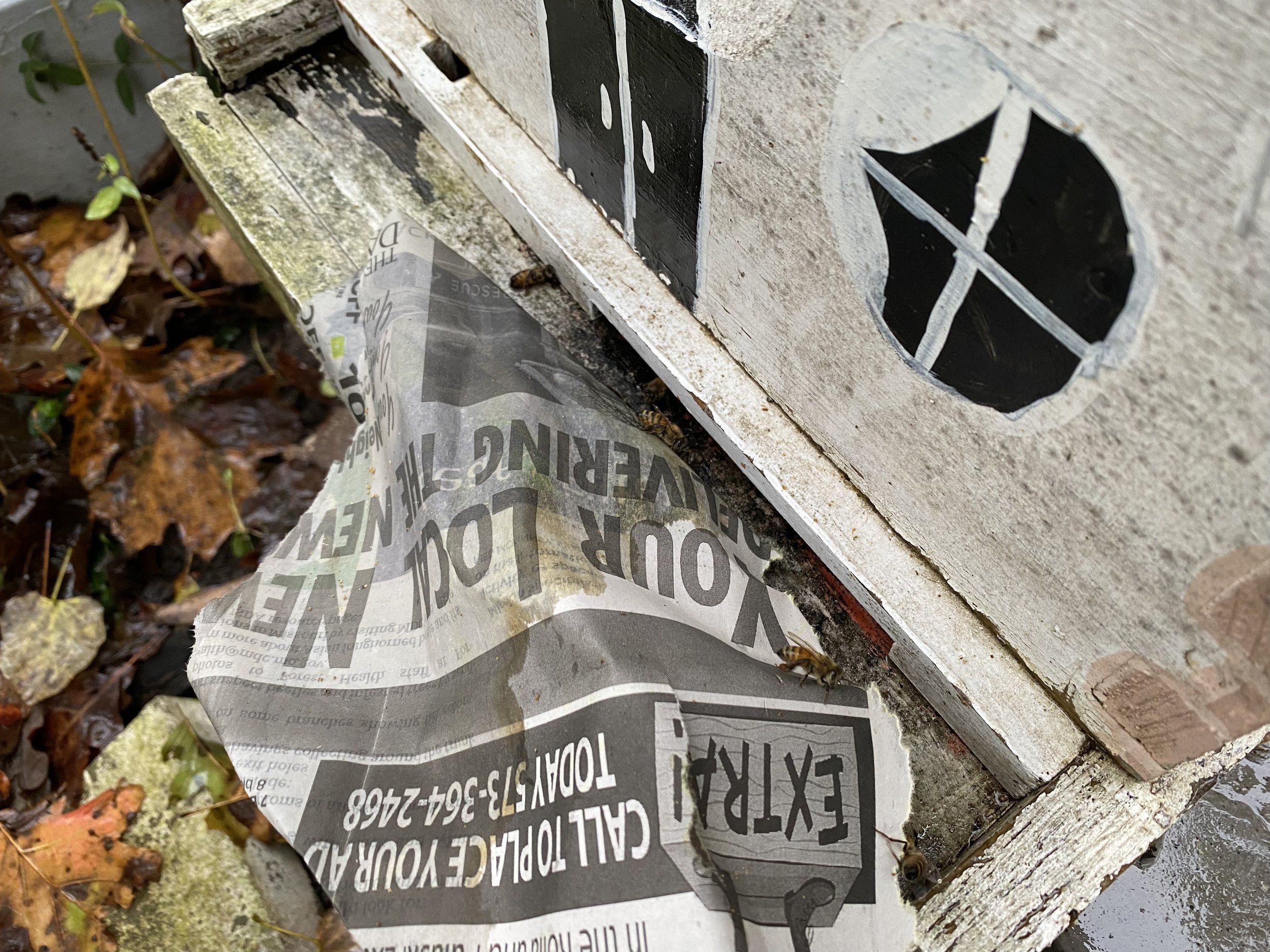Merging Colonies
/Merging two colonies, one with a laying queen, into one winter colony. (Photo by Charlotte Ekker Wiggins)
Merging Colonies
There are many steps beekeepers take this time of year to get their bees ready for winter. One that I am finally trying this year is merging my smaller colonies so they have a better chance to survive winter.
Each colony has a unique queen with a unique pheromone. To successfully merge two colonies, one queen has to be removed and the pheromone of the colonies mixed so the worker bees are loyal to the remaining pheromone.
To combine colonies, I use one sheet of newspaper with slits to help the pheromones mingle between hive boxes and bees. The bees themselves will remove newspaper pieces, speeding up the pheromone mixing.
After a couple of days, the newspaper between the boxes has been removed by the bees, thereby mixing the two bee colonies.
Newspapers with slits are used to combine pheromones of two colonies. (Photo by Charlotte Ekker Wiggins)
I escorted a few bees on the newspaper back to the entrance of the bottom hive. (Photo by Charlotte Ekker Wiggins)
This year, I am merging two smaller colonies who have queens with larger colonies that are queenless. In this example, I moved the remaining newspaper to the front of the colony so the attached bees could move back into their home.
Feeding the now combined bee colonies so they can store sugar water for winter food. (Photo by Charlotte Ekker Wiggins)
This is the new combined colony, now mixing worker bees from both colonies so they can cluster together and stay warm through winter.
Since their honey stores were low, I am also feeding them 2 parts sugar to one part water so they can have food to eat and not consume what stored honey they still have.
Next spring, if all goes well, I will split the colony back into two separate ones and let the queenless colony grow a new queen. This helps keep the Varroa mite levels low, one of several steps to manage that invasive pest. For other options, see A Beekeeper’s Diary Self-Guide to Beekeeping.















